Amidst high-rise buildings, luxury resorts, and a bustling metropolis, Cebu remains and will always be one of the Philippines most historical places. Playing a significant role in the country’s history, Cebu beckons not just the history buffs but those who want to know more about Cebu. Thus, to fully experience Cebu, make sure you visit any of these cultural and historical sites.
1. Basilica Minore del Santo Niño de Cebu

Absolutely a not-to-be-missed cultural landmark in Cebu, Basilica del Santo Niño is not just the country’s oldest church but it bears the history and tradition of the Catholic faith in the Philippines. Tracing its history back to Ferdinand Magellan’s time, it has endured three fires and the 2013 earthquake that collapsed its belfry. Santo Niño Church as locals prefer to call it, serves as the sanctuary of the Santo Niño that Magellan himself brought.
Today, it is a mix of pilgrims and tourists. Admire its architecture but most of all, observe the Christian tradition and deep Catholic faith of the locals.
Basilica del Santo Niño
Address: Osmeña Boulevard, corner P. Burgos Street Cebu City
Price: free
Opening Hours: Open daily. Monday - Thursday & Saturday: closes at 7pm, Friday: closes at 9pm, Sunday: closes at 8:30pm
Contact: +63 032 255 6698
Near by Food: Cebu La Fortuna Bakery
Tip from tour guide

Note that the Basilica Miñore de Santo Niño requires visitors to observe a proper dress code, particularly for ladies. They should not wear shorts and sleeveless clothes while entering the church. As to the reason, it is not to distract anyone's attention, especially those who are solemnly praying.
Tip from Trip101 local expert



If you're a devout Catholic, searching for moments of zen, or just curious about local life, it's worth spending at least an hour here in the Basilica. There's plenty to do within the premises. You can make a wish by lighting a candle at the "dagkutan", heading to the garden to relax, or joining the long queue to venerate the sacred image of the Holy Child.
I've been going to the Santo Niño Church a lot lately. Whether I'm by myself or with my family, I can appreciate the serenity and peace its environment gives me. Masses are held every day. On Mondays through Thursdays then on Saturdays, the first mass begins at 7am. Fridays and Sundays see a much earlier start at 5am. For full mass times, you can refer to the Basilica's Facebook page - search "Basilica Minore del Santo Niño".
2. Magellan’s Cross

The site of the cross that the Spaniards planted upon their arrival is enshrined at Magellan’s Cross, just outside the Basilica del Santo Nino. To prevent people who believe the cross holds supernatural powers from stealing a piece - the cross is encased in timber wood known as “tindalo”. Some might say there is nothing much to see here, but Magellan’s Cross is a major historical piece, symbolising the beginning of European conquest in the archipelago that changed the country’s history and what it is today.
Traveler's tips

A visit to Cebu would not be complete without a stop at Magellan's Cross, which can be found within a pavilion in Plaza Sugbo, near the Basilica del Santo Niño. This is often included in the typical city tour in Cebu, so we too headed to the famous cross. Here, you'll encounter numerous candle vendors who will offer their candles for sale. In exchange for purchasing candles, they will capture a photo of you with the cross and offer prayers on your behalf. It's worth noting that they are skilled photographers, so it's a good idea to purchase candles from them.
3. Fort San Pedro

From Magellan’s Cross, walk for 5 minutes towards Fort San Pedro, a military defense fortification built by Miguel Lopez de Legazpi, the Spanish explorer who successfully established a Spanish colony in the Philippines, almost 45 years after Magellan set foot in Cebu. Though the smallest, Fort San Pedro is the oldest fort in the country. Today, the fort is a popular attraction in the city.
A peaceful walled space in the city center, walk around its walls and see views of the Plaza Independencia and the port. Visit its museum or spot the coral stone bricks as well as cannons. Kid-friendly, Fort San Pedro has space and history for families to enjoy.
Fort San Pedro
Address: A. Pigafetta Street Cebu City
Price: less than 1 USD
Opening Hours: 7am - 7pm
Contact: +63 32 256 2284
Tip from tour guide

Fort San Pedro is considered the oldest and the smallest fortress in the country. It is triangular in shape, which they created because they wanted it to be protected by the divine Trinity (God the Father, the Son and the Holy Spirit). Feel free to visit, as it has a lot of story to tell.
You might be interested in these Airbnbs!
4. Colon Street

This busy street in Cebu with its decades-old buildings mirrors one big market where locals shop for goods at bargain prices. But did you know this is not just Cebu’s oldest street? With Cebu as the oldest city in the Philippines, Colon Street is the country’s oldest street and it has up to this present, remained a thriving commercial area.
You can walk along the street and get a real feel of local trade or, if you find the bustling activity too overwhelming, take a cab and watch as the activity unfolds around you. For returning locals, Colon brings nostalgia while adventurous tourists love the kind of Cebu they see on this busy street. Needless to say, Colon Street is one historical street that needs further attention.
Tip from Trip101 local expert

As the festive holidays draw near, a lively market takes over Colon Street for the night. You'll enjoy its loaded offering of food choices, shopping options, and even souvenirs to take home everywhere you go. I had the opportunity to visit the night market last year, and let me tell you, a bunch of great deals are hidden within those endless rows of stalls. Just look at the several pairs of pre-loved pants that I bought over there!
The Colon Night Market opens in late October and is active throughout the end of January the following year. Much of the road is closed off to give way for vendors, so if you happen to be traveling by car, jeep, or habal-habal (motorcycle taxi), it's best to stop over at a few key areas, such as the Gaisano Metro store.
Cebu Island Tour Guide
Alp Asa
I was a former concierge staff of one of the prestigious hotels in Cebu. I had a training in Tour Guiding from the DOT (Department of Tourism). With my experience for over 10 years in hospitality industry and with the training I had from DOT. Hence, gives me the passion to show my city, neighboring islands and the cultures to my visitors. This is to ensure them for a Memorable, Priceless visit ... Read more
5. Taoist Temple

Those who grew up in Cebu first visit the Taoist Temple during a school field trip. Tucked in an affluent residential area, unsurprisingly called the Beverly Hills Subdivision, the Taoist Temple is open to non-followers and believers of Taoism. Built in 1972, it is still one of the popular stops when it comes to cultural sites in Cebu. The majority of Cebuanos have Chinese lineage and the prominence of the Taoist Temple secures the fact that Cebu is one big Chinatown.
Visitors can see the Chinese architecture, walk along the replica of the Great Wall of China and spot the dragon. They can also observe the worshippers in the Main Hall or relax and see the view of the city. Visiting the Taoist Temple is a nice respite from the bustling urban city life in Cebu.
Taoist Temple
Address: Beverly Hills, Cebu City
Traveler's tips

The Taoist Temple in Cebu, renowned for its religious significance, stands out as a must-see destination, appealing to both believers and non-believers alike. Its stunning architecture and the unobstructed panoramic view of Cebu make it an attraction not to be missed. If my memory serves me correctly, reaching the primary temple requires ascending roughly a hundred stairs. During my visit, I was able to light incense and had a chance to make a wish by dropping two wood blocks. If they both landed face up, you could make a wish.
6. Yap-Sandiego Ancestral House

With much of Cebu heavily destroyed during the Second World War, some older buildings remain. One of them is Yap-Sandiego Ancestral House located in Parian District, a Chinese enclave in Cebu. The house was built way back in the 17th century, making it the oldest residential house in the Philippines. Like most structures in Cebu, it is made of coral stone and Tisa (clay tile) roof. Highly durable hardwood like molave was also used. Visit the living quarters and dining room to see how people used to live and check out some of the house’s interior pieces - some as old as the house itself - from religious items to their dinnerware.
Yap-Sandiego Ancestral House
Address: Lopez Jaena corner Mabini St. Parian, Cebu City
Price: from 1.25 USD
Opening Hours: 9am - 7pm
Duration: around 45 minutes to 1 hour
Contact: +63 32 514 3002
Website: Yap-Sandiego Ancestral House
Traveler's tips
There's an eerie feel to this house, especially the part filled with dolls and the bedroom. But it's worth a visit, as it takes you back in time to when the internet was still unimaginable. You'll love experiencing old Philippines and might even wish you had been alive during that time.
7. Casa Gorordo Museum

Those who want to drop by Cebu’s museums should not skip Casa Gorordo, an ancestral home, turned museum. Built in 1850, Casa Gorordo is newly renovated, complete with an interactive multifaceted museum, with tablets for guests and a museum café. The house was built by Alejandro Reynes and later bought by Juan Isidro Gorordo. It is unique as it has a chapel inside - one of its owners, Juan Bautista Gorordo, was Cebu’s first bishop. The lower ground is where visitors can experience an interactive museum tour while learning about Cebu’s history and heritage.
Tour around the house and imagine life among the local elite. Guests can check out Bishop Gorordo’s study, with an authentic copy of Noli Me Tangere, an anti-clergy novel written by Jose Rizal that helped ignite the Philippine Revolution against Spain.
Casa Gorordo Museum
Address: Eduardo Aboitiz Street ( formerly Lopez Jaena Street), Cebu City
Price: from 2 USD (20% discount for senior citizens, high school and college students)
Opening Hours: 9am - 5pm. Closed on Mondays
Contact: +63 32 411 1767
Near by Food: Museum has its own cafe
Website: Casa Gorordo Museum
8. Mactan Shrine

A must-do when on Mactan Island is Mactan Shrine, one of the first tourist attractions on the island. Mactan Shrine is built in honor of the Battle of Mactan and the two opposing leaders – Lapu Lapu and Ferdinand Magellan. Visitors will see a mural depicting the battle in 1521 that lead to the death of Magellan, and a pivotal point in history proving that Cebuanos never kneel down before a foreigner without a bloody fight.
Magellan’s body was never recovered and a Magellan monument was built with an obelisk inscribed with “Gloria Espanola”. The highlight of the shrine is the 20 meter (65.6 foot) sinewy statue of the local ruler, Lapu Lapu (the city is named in his honor), who is also hailed as the first hero of the Philippines.
9. Heritage city of Carcar

The city of Carcar in southern Cebu is not just the “Shoe Capital of Cebu”. It is also more than just chicharon (fried pork rinds) and lechon. Carcar, unlike other cities of Cebu, has the highest number of well-preserved structures, and is therefore also known as Heritage City. Take a walking tour around the city starting at the plaza or town square and its parish church, St. Catherine of Alexandria, with its Moorish-influenced domes. The church convent is also one of the oldest in Cebu.
Some of the city’s other heritage buildings include the Upland Elementary School (1905) and one of the buildings of St. Catherine ‘s College (1921). The city museum used to be a women and children hospital and is a dainty structure with its latticework and curved railings. Don’t miss Carcar’s heritage homes, some dating back to 1859.
10. Boljoon Church

Southern Cebu constantly summons travelers with its pristine beaches, breathtaking peaks and whale sharks. However, this church’s charm makes it hard not to stop for a quick look. Boljoon Church complex is a historical treasure, not just for its tenure but the role it played. This sea-facing church is a fortress against the Moro slave raiders with a blockhouse watchtower built complete with artillery.
The convent now serves as a museum. Beside the church is a school with dates back to 1940 while on the other side is the ruins of an 18-century cemetery. Archeological excavation on the grounds unearthed a burial site, complete with burial jars, necklaces, and other objects. The church with its triangular pediment and bas-relief, as well as its ceiling paintings, is equally remarkable.
Cradle of Philippine culture
These cultural sites and heritage places are some of the things Cebuanos are truly proud of, patronized by local tourists and now by international visitors who wish to get to know Cebu deeper, through its past. Cebu has kept its culture and heritage all these years and it has successfully intertwined with modernity. More than beautiful structures, it is here where Cebu’s heritage is eternally sealed. Thus, visiting various cultural attractions in a city so rich in history will always be a highlight, when in Cebu.
Malacañang sa Sugbo
Contributed by Trip101 Local Expert, Lydia Montejo
Source: Lydia Montejo
Located right beside the historic Plaza Independencia, this building has seen plenty of significant events during its lifetime. It was built in 1910 during a period when much of the Philippines was occupied by the Americans. It was originally the regional headquarters of the Bureau of Customs for many years, and thus has earned the nickname “Aduana,” the Spanish term for “customs” still uttered by older generations. Later in 2004, the building was rehabilitated into the current Malacañang sa Sugbo, and, as of 2023, has become home to the National Museum of the Philippines - Cebu.
I have seen and heard the buzz about this attraction a lot since its recent opening, which made me want to visit it more and more. Luckily, I got the chance to check the museum out with my mother during my free time. Admission into the building is free, which initially surprised both of us, considering the rich number of artifacts and artworks it proudly displays. The lower level features geological findings and well-maintained items from as far back as 1,000 BC, while the upper floor is reserved for art exhibits from Filipino artists. If you’re through with your museum crawl and looking for something to fill your tummy, I recommend checking the nearby food stalls for local delicacies such as siomai and puso.
Argao Church
Contributed by Trip101 Local Expert, Lydia Montejo
Source: Lydia Montejo
Cebu Island hosts a vast range of Spanish-era churches that have withstood generations, and this holy structure in the town of Argao is no different from other ones. I vividly remember visiting the church for the first time during my college class’s out-of-town trip after checking out the weaving industry there. Some of its untouched features left me impressed for days. From the ceiling mural reminiscent of the 1800s to the rare, properly conserved pulpit, you won’t see any modern churches with those kinds of amenities these days. What also intrigued me upon my visit was the grave marker of a parish priest, who died just years before the Philippines gained its first independence in 1898.
Argao Church is just one of several structures that surround the town’s old plaza, which bears a strong Spanish influence. It’s within proximity to several other old structures such as the quaint chapel, the park’s arch gates, and the former town hall that has since turned into a museum. If you’re a history buff, then you’ll certainly get a kick out of visiting this special part of Argao.
History
Get Trip101 in your inbox
Unsubscribe in one click. See our Privacy Policy for more information on how we use your data
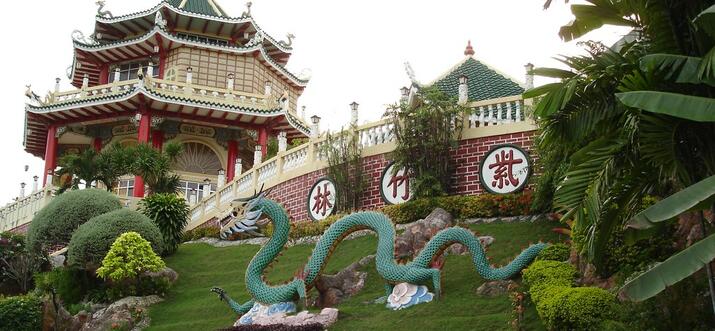











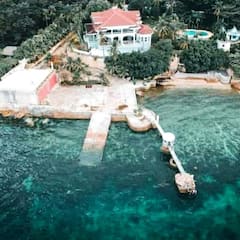
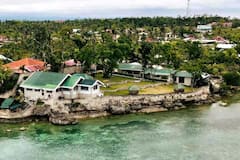
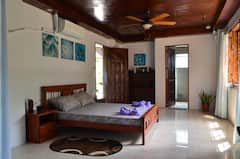

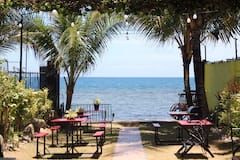





















Create an account to